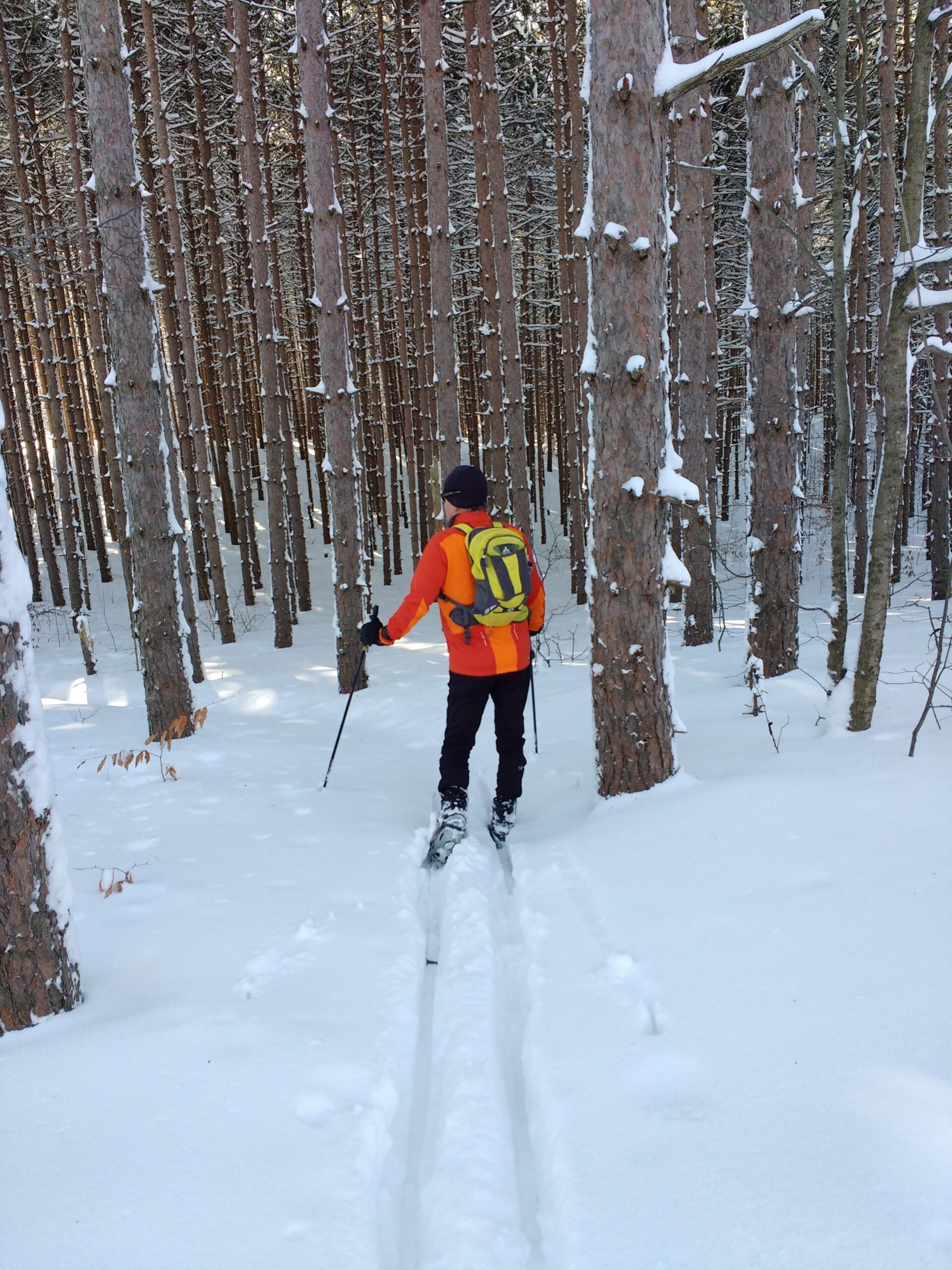With more than 80 km of trails consisting of valleys and ridges, and an abundance of snow throughout the winter, the Copeland Forest is a dream location for snowshoeing, backcountry and cross-country skiing, and fat biking. The forest also offers a beautiful landscape for animal enthusiasts to find the tracks of deer, coyote, bear, beaver and even the elusive fisher.
Beginners
Have no doubt, the terrain can be quite challenging for beginners to navigate so it’s a good idea to use the Horseshoe Resort paid trails to gain a better understanding of the forest and to access rental snowshoes, skis and fat bikes. Parking P2 off Ingram Road is plowed throughout winter for access from the north side.
If coming from P2, beginners may want to keep to the double track as these are well mapped and shown on trail signs.
Advanced
Experienced snow-sport enthusiasts can enter the forest at multiple locations (primarily from P2) where other users have packed the trails down. Cross-country skiers will want to use the Horseshoe Resort trails, which requires the purchase of a daily or annual pass. Backcountry skiers can pretty much go anywhere in the forest.
Guidelines
- Don’t travel alone.
- Non-paid users of the forest must stay to the edge of the groomed trails maintained by Horseshoe Valley Resort. If you want to use these ski and snowshoe trails, purchase a trail pass. These trails only account for about one-third of the park and there are many other free trails.
- Come prepared with water and snacks and the bags necessary to take home garbage and waste. There are no public facilities in the forest.
- Dogs must be under control or on a leash and excrement must be removed from the trails.
- Don’t forget to dress appropriately (layers are a good idea) and bring a GPS device.

